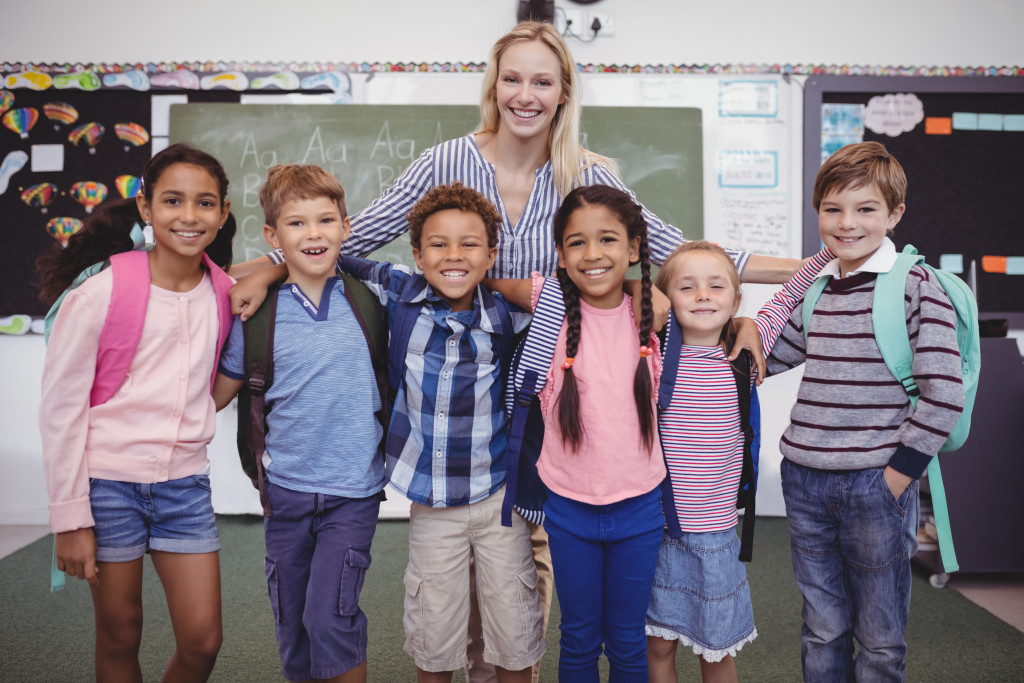- Install air purifiers and regularly change filters to maintain fresh, clean air in educational spaces.
- Increase sanitation efforts, such as deep cleaning surfaces with EPA-registered disinfectants and providing separate waste bins for disposal.
- Utilize technology such as surveillance systems to monitor classrooms and alert administrators of potential health risks.
- Regularly ventilate classrooms and ensure any damaged ventilation systems are repaired promptly for optimum indoor air quality.
As schools reopen their doors, parents and educators everywhere ask how to keep kids safe during the pandemic. While many challenges accompany returning to school during this time, several measures can be taken to ensure a safe and successful transition. Here is a closer look at some of the critical steps you can take to ensure children stay healthy and continue learning in these uncertain times.
Indoor Air Quality
The quality of indoor air plays a critical role in preventing the spread of disease. According to global studies, indoor air pollution is 3.5 times worse than outdoor air pollution and can become even more concentrated in classrooms. Fortunately, there are ways to combat this issue.
Install Air Purifiers
To ensure the safety of students and staff, schools need to take steps such as installing new high-efficiency filters and air purifiers to maintain fresh, clean air throughout the building. These filtration systems should be capable of capturing particles as small as 0.3 microns wide, which includes most viruses.
You can invest in air purifiers that use HEPA filters, electrostatic filtration, and other proven methods to reduce the concentration of common airborne pollutants. Additionally, to further reduce the risk of contagion within classrooms, you can consider using air purifiers with UV-C light technology, which is known to be highly effective at inactivating viruses.
Clean Air Ducts
In addition, regularly changing air filters should be part of school protocols moving forward—ideally once every two months or so—as filter efficiency drops over time with use. A professional cleaning service should be hired periodically to ensure that all vents and ducts are free from dirt build-up that could potentially reduce indoor air quality or even cause health problems over time. With a trusted air hygiene specialist, it’s possible to improve indoor air quality and make sure that students and staff can breathe easily in the classroom.
Ventilation is Key
Another essential factor to consider is ventilation. The CDC recommends keeping windows open when possible to allow natural airflow and using fans or blowers to ensure proper air circulation. Schools should also make sure that any damaged ventilation systems are repaired promptly.
Boosting Sanitation Efforts
To further reduce potential risk factors inside classrooms, educational facilities should also increase their focus on sanitation efforts. This practice should become standard procedure at all educational institutions moving forward—especially before summer holidays when long periods of vacancy could allow particulate matter which could exacerbate existing health conditions when classes resume again later in the year.

Scheduled Deep Cleanings
Develop a cleaning schedule and plan for deep cleanings regularly. This includes disinfecting surfaces, vacuuming floors, washing windows, and more. Schools should also use only EPA-registered disinfectants for classrooms and other public areas. This will help protect against germs, bacteria, and viruses that can cause illnesses.
Waste Disposal
To make sure that schools are free of unnecessary germs and bacteria, waste disposal should also be addressed. Schools should adopt a strict policy that requires all staff and students to dispose of their waste in designated bins. This will help keep the school environment sanitary and germ-free.
Separate waste bins should also be provided to reduce the spread of germs. For example, waste bins for paper products and recyclable materials should be clearly marked to ensure proper disposal. On the other hand, non-biodegradable materials such as plastic should be disposed of separately to avoid contamination.
Use of Technology
Tech trends have been gaining traction in educational spaces and can be used to aid the transition back to school during a pandemic. With more than half of the world’s population now connected to the internet, technology can help ensure students continue learning while staying safe.

Surveillance Systems
It’s possible to remotely monitor classrooms and other educational spaces with the help of surveillance cameras or temperature monitoring systems, which can alert school administrators in case of any suspicious activities or potential health risks.
These are just a few measures that schools can adopt to ensure a safe and successful transition back to school during a pandemic. Schools must take the necessary steps to ensure their students, staff, and families are safe and healthy. With proper guidance, the transition back to school can be smooth.




